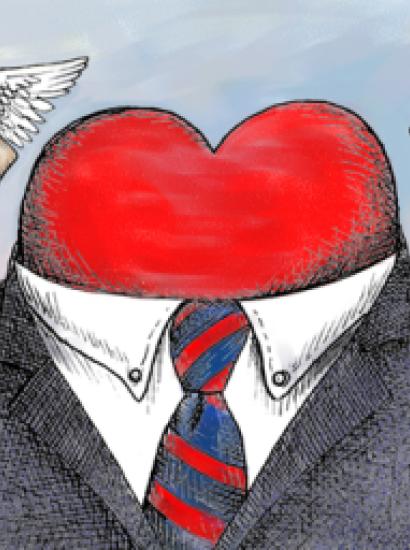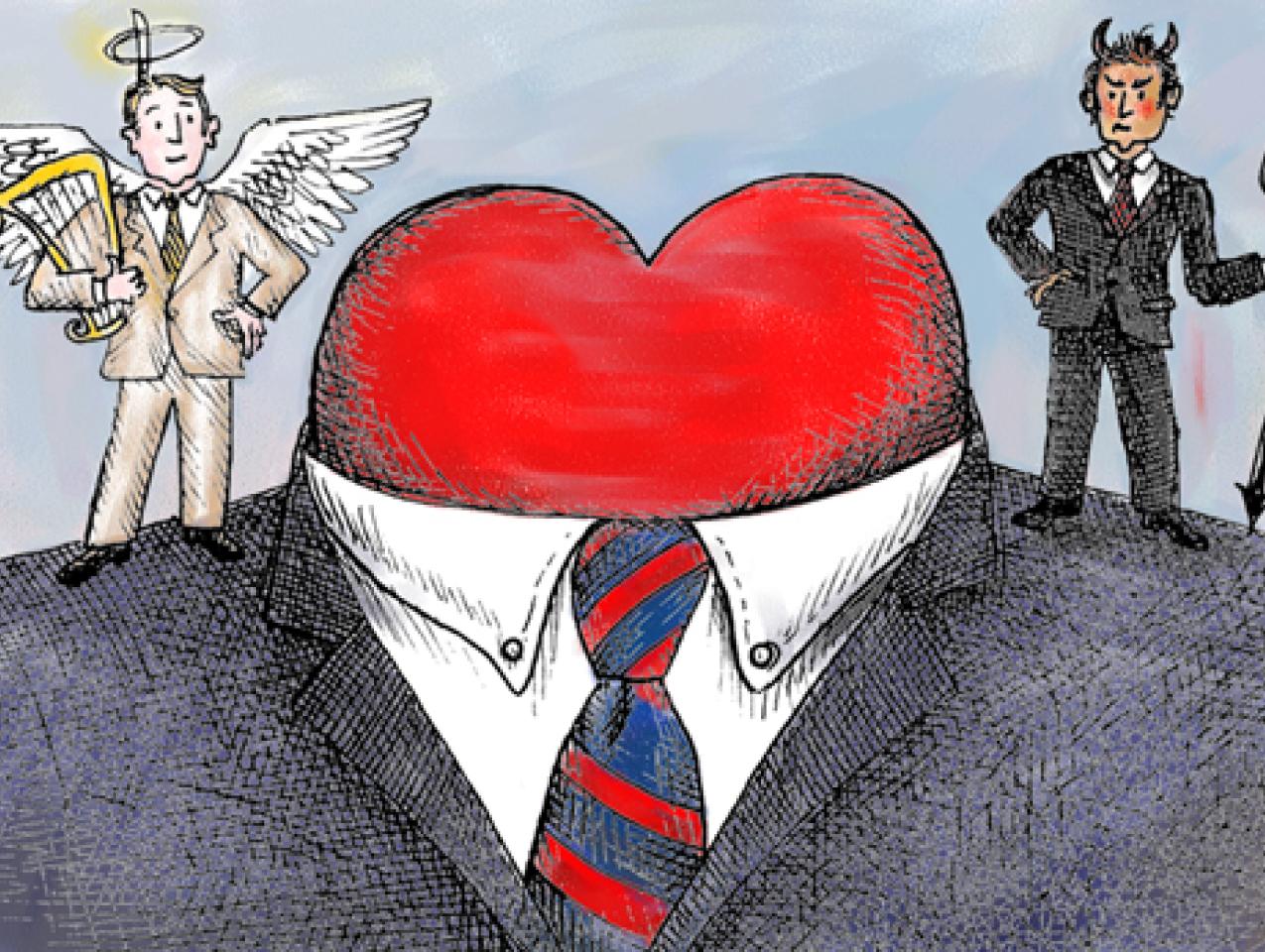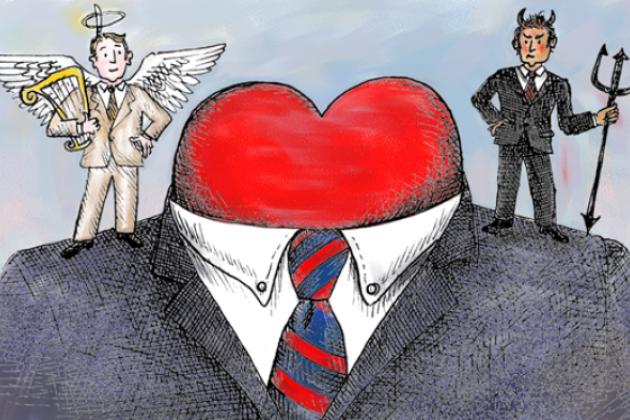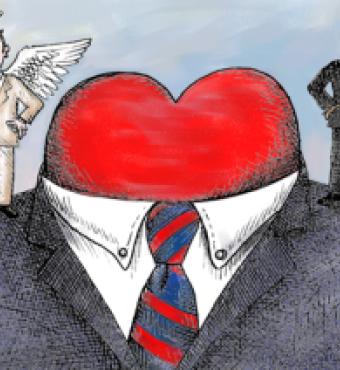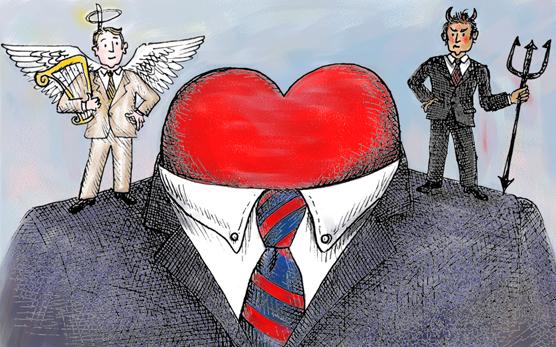- Contemporary
- Politics, Institutions, and Public Opinion
- Law & Policy
- Civil Rights & Race
- State & Local
- California
- Budget & Spending
- History
- Economics
Editor’s note: This is the second installment in a five-part essay series by the author on compassionate conservatism. The first essay, "Compassionate Conservatism: A Primer," can be found here.
In our previous segment we discussed the political backdrop of George W. Bush’s project of "compassionate conservatism" and promised that in this installment we would explore the intellectual one. The intellectual sources of the notion, just like the political ones, were complex and varied. Two among them stand out, however, because Bush himself has testified to their primacy for him. These were the very different writings of Myron Magnet, on the one hand, and Marvin Olasky, on the other. These represented the two poles of "compassionate conservatism," and between them they reveal the tensions that would continue to haunt the project.
Myron Magnet and the cruel compassion of the welfare state
The first of these books that shaped Bush’s thinking emerged from a wholly secularist milieu. It was Magnet’s The Dream and the Nightmare (1993), which Bush would tell the Wall Street Journal was the most important book he had ever read, after the Bible.
Magnet, a professor of English at Columbia, had moved from studying Charles Dickens’s portrayal of poverty to writing essays in Fortune and City Journal. Dream had arisen from these essays. A powerful critique of the welfare state, it updated arguments made by so-called "neoconservatives" ever since the mid-1960’s. Magnet didn’t question the sincerity of liberal compassion. He insisted, however, that its crowning achievement, the full-blown welfare state of Lyndon Johnson’s "Great Society," had both failed and corrupted the very poor whom it aimed to help.

Illustration by Barbara Kelley
Magnet’s was a voice crying in the desert of late 1980s Manhattan. The city was foundering in squalor, stench, and cacophony. The homeless and panhandlers were everywhere and the authorities no longer maintained even a semblance of civic order. Magnet wrote as an affluent New Yorker who encountered at every turn what society had wrought upon the underclass and what it in turn was wreaking on society. It was all on view in the streets surrounding his Upper West Side home, and it shamed and sickened him.
The Dream and the Nightmare expressed both Magnet’s compassion at the plight of this new class of dependents and his indignation at those who had fostered, tolerated, and aggravated it. His subtitle expressed his thesis: "The Sixties’ Legacy to the Underclass." The culprit of his tale was culture—he entitled Chapter One "The Power of Culture"—but not, or not initially, that of the underclass itself. Each of Magnet’s chapters focused on one aspect of the outlook that had captured America’s progressive elites in the sixties. He showed how this outlook had shaped first the behavior of those elites--including, crucially, their response to the problem of the underclass--and then, by a process of contagion, the behavior of the underclass itself.
Compassionate conservatism, step one: Stop the welfare system, stop affirmative action, stop treating criminals as justified rebels, stop Afrocentric education in the schools.
In analyzing how the dream had spawned the nightmare, Magnet entered no brief on behalf of faith. He did offer, however, a stinging critique of the prevailing liberal secularism. For he argued that the ultimate respect in which America’s best off had failed its worst off was by refusing to hold either the poor or themselves to appropriate moral standards. Instead, they modeled behavior that their privileges allowed them to afford but that wreaked havoc among the poor. The seamy underside of liberal permissiveness—tolerance of casual sex and indifference to marriage, "recreational" drug use, disdain for the work ethic and for everything "bourgeois" (and ultimately for "Western culture" as such)—these wouldn’t cost a professor his tenure, but they blasted any hopes the poor might harbor of pulling themselves out of the underclass. For that required stable families, frugal and abstemious habits, respect for the dignity of work, and adherence to a strong (and therefore non-relativistic) moral code.
What then, according to Magnet, was to be done?
The first answer to the question of what is to be done…is to stop doing what makes the problem worse. Stop the current welfare system, stop quota-based affirmative action, stop treating criminals as justified rebels, stop letting bums expropriate public spaces or wrongdoers live in public housing at public expense, stop Afrocentric education in the schools.
In social policy as in medicine, the first rule was to do no harm. There could be no crueler compassion than to ruin lives in the guise of saving them. But if this was what the comfortable classes were to stop doing, what were they to start doing?
For the breakdown of the poor to be healed and the moral confusion of the Haves to be dispelled, we need above all to repair the damage that has been done to the beliefs and values that have made America remarkable and that for two centuries have successfully transformed huddled masses of the poor into free and prosperous citizens. The soul of American isn’t an ancient dynasty, or immemorial rootedness in an ancestral fatherland, or welfare paternalism, but an allegiance to a few fundamental ideas. The principles on which our society was built must once again inform our public life, from social policy to school curricula: that everyone is responsible for his or her actions; that we believe in freedom under the rule of law, and that we enforce the law scrupulously in all neighborhoods; that the public, communal life is a boon, not an oppression; that everyone has equal rights, and rights belong to individuals, not groups; that we are free to shape our own fate.
Magnet’s stance was in some sense conservative: Americans of 1993 were to reject the madness of the previous 30 years and return to their time tested "few fundamental ideas." Yet, if a conservative, Magnet remained a secularist, a Manhattan intellectual addressing others of the same. His silence concerning religion was deafening. The renewal for which he called was moral and civic only. At most he invoked a civic religion of republican self-government.
To Magnet, the social rot from below had trickled down from above. Hence, the affluent would have to mend their ways to show the poorest how to mend theirs.
Still, it was only two short steps from Magnet’s critique of the welfare state and his secularist plea for a tempered liberalism to the engagement with the underclass represented by "faith based initiatives." If he was right that the social rot below had trickled down from above, the affluent would have to mend their ways to show the poorest how to mend theirs. Yet there remained the pressing practical question of what programs to benefit the poor should replace those Magnet would discard. Here he offered no real guidance.
This silence of Magnet’s suggested a broader problem. If mainstream (i.e. left liberal) secularism had failed to solve America’s social ills—if in fact it had aggravated them—how much confidence could Magnet’s own secularism command? He exhorted Americans to go back—but did he ask them to go back far enough? No doubt the moderate welfare state of FDR and Truman had been preferable to the bloated one of Johnson and after. But that was because, as Magnet showed, it had continued to respect crucial older notions of civic virtue and personal responsibility.
Yet at the same time (as Magnet also showed) even the New Deal already implied a creeping rejection of these notions and thus paved the way for what followed. Clearly this rejection was rooted in secularism itself, which is to say in the "scientific" critique of the Christian notion of the soul. From this critique flowed modern social science’s rejection of the notion of the responsible individual—hence the conclusion that man is what we make him, a creature of his environment for whom enormous progress is possible, but only through social engineering.
Magnet opposed this conclusion, but offered no alternative premises from which to draw a different one. Practically he could suggest no more than a return to an earlier stage of the welfare state. By his own account, however, the New Deal had stopped short of excesses of the Great Society only due to outworn inhibitions which as such had been bound to fade. Surely it would take stronger medicine than this to heal our present grave ills. Magnet’s critique was withering, but, like so many neoconservative writers, he seemed to have written himself into a corner. Precisely if you accepted his dire presentation of America’s cultural crisis, you had to doubt that any merely secularist prescription could cure it.
Marvin Olasky and the retrieval of the "compassion consensus"
At this point enter, stage right, the other main intellectual influence on George W. Bush’s thinking, Marvin Olasky. An Evangelical Christian and a prolific journalist, he worked tirelessly to show that genuine welfare necessarily transcended secularism. If Magnet had impressed Bush by exposing the problem of the welfare state, Olasky impressed him as the man who offered the solution to it. In 2000, in a preface to one of Olasky’s books, he would call him "compassionate conservatism’s leading thinker."
During the Nineties, Olasky had emerged as a tireless publicist on behalf of what came to be known as faith based initiatives. While this term was a new one, Olasky argued that the practices so denoted were old and firmly grounded in American tradition. He also insisted that they alone held the key to a practically effective compassionate conservatism.
In The Tragedy of American Compassion (1993), Olasky presented the "compassion consensus" underlying early American social policy, from colonial days through the mid-19th Century. On his showing, there was little new under the sun in current debates over social welfare policy, their contours having surfaced already in the 18th and 19th Centuries. Not only the Cotton Mathers and the Benjamin Franklins, but even McGuffey’s Reader and the penny press had joined the debate on how to relieve poverty without encouraging what we could call dependency. Olasky recounted the profound social changes as well as the intellectual challenges that this "compassion consensus" had surmounted in the course of the 19th Century. These had included utopian socialism on the one hand and social Darwinism on the other. He also chronicled the slow but inexorable rise in the 20th Century of new statist notions of welfare based on universal entitlement. He expounded the demoralizing character of these, and the havoc they had wreaked in our own day, thus completing the "tragedy."
Meanwhile, Olasky believed that to escape poverty, the poor need a set of virtues most effectively inculcated through religion.
Tragedy was almost exactly contemporary with The Dream and the Nightmare; both books appeared in 1993. Olasky differed from Magnet less in his analysis of the problems bedeviling the urban underclass than in the frankly religious character of his indicated solution. For the "compassion consensus" as he sketched it had been strongly Christian in character. As we had deviated from America’s Bible-centered traditions, so to these we must return. While his focus was on the historically dominant Protestant faith, his argument was nondenominational: he also cited Catholic and Jewish expressions of the vanished "compassion consensus."
In Olasky’s later books, Renewing American Compassion and Compassionate Conservatism, he updated his argument, but he did not change it. Each offered a similar listing of the principles of "effective compassion" which by 2000 had become "compassionate conservatism." Olasky was nothing if not pragmatic, but what worked, according to him, were policies that fostered spiritual renewal. What was needed to escape from poverty was a set of virtues most effectively inculcated through religion.
Obviously Olasky’s emphasis was very different from Magnet’s. The changes that Magnet urged were, as we have seen, entirely secular in character. He had conceived of the needed renewal as moral and political but not spiritual. For Olasky, by contrast, only the reinvigoration of American religion could pave the way for the reform of American politics. In identifying the thought of both men as fundamental for compassionate conservatism, Bush implied the daunting necessity of reconciling them.
Defining ideas in conflict
There were other intellectual influences at work on Governor and later President Bush. These included Michael Gerson, his chief speechwriter and closest advisor on domestic affairs, and the political scientist John DiIulio, the first head of Bush’s flagship program, the Office of Faith Based and Community Initiatives. Both brought a Christian perspective to the issue (although one markedly different from Olasky’s).
I’ve dwelled on Magnet and Olasky for two reasons. The first is Bush’s acknowledgment of them as the formative contemporary influences on his own thought. The second is the marked tension between their understandings. Can a house divided between conflicting defining ideas stand? As we’ll see in our next installment, the Office of Faith Based and Community Initiatives would prove to be just such a house.









